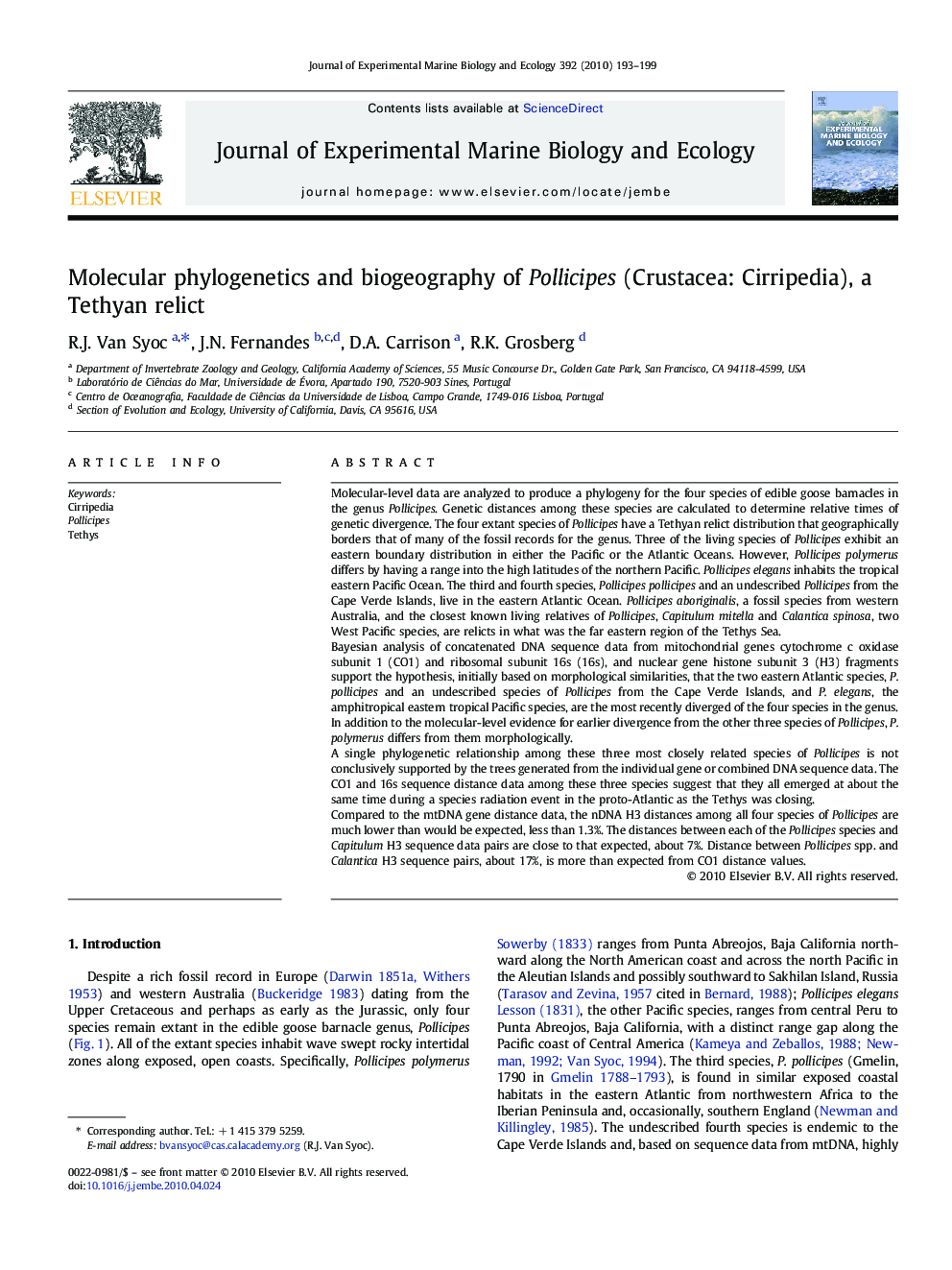| کد مقاله | کد نشریه | سال انتشار | مقاله انگلیسی | نسخه تمام متن |
|---|---|---|---|---|
| 4396565 | 1618468 | 2010 | 7 صفحه PDF | دانلود رایگان |

Molecular-level data are analyzed to produce a phylogeny for the four species of edible goose barnacles in the genus Pollicipes. Genetic distances among these species are calculated to determine relative times of genetic divergence. The four extant species of Pollicipes have a Tethyan relict distribution that geographically borders that of many of the fossil records for the genus. Three of the living species of Pollicipes exhibit an eastern boundary distribution in either the Pacific or the Atlantic Oceans. However, Pollicipes polymerus differs by having a range into the high latitudes of the northern Pacific. Pollicipes elegans inhabits the tropical eastern Pacific Ocean. The third and fourth species, Pollicipes pollicipes and an undescribed Pollicipes from the Cape Verde Islands, live in the eastern Atlantic Ocean. Pollicipes aboriginalis, a fossil species from western Australia, and the closest known living relatives of Pollicipes, Capitulum mitella and Calantica spinosa, two West Pacific species, are relicts in what was the far eastern region of the Tethys Sea.Bayesian analysis of concatenated DNA sequence data from mitochondrial genes cytochrome c oxidase subunit 1 (CO1) and ribosomal subunit 16s (16s), and nuclear gene histone subunit 3 (H3) fragments support the hypothesis, initially based on morphological similarities, that the two eastern Atlantic species, P.pollicipes and an undescribed species of Pollicipes from the Cape Verde Islands, and P. elegans, the amphitropical eastern tropical Pacific species, are the most recently diverged of the four species in the genus. In addition to the molecular-level evidence for earlier divergence from the other three species of Pollicipes, P. polymerus differs from them morphologically.A single phylogenetic relationship among these three most closely related species of Pollicipes is not conclusively supported by the trees generated from the individual gene or combined DNA sequence data. The CO1 and 16s sequence distance data among these three species suggest that they all emerged at about the same time during a species radiation event in the proto-Atlantic as the Tethys was closing.Compared to the mtDNA gene distance data, the nDNA H3 distances among all four species of Pollicipes are much lower than would be expected, less than 1.3%. The distances between each of the Pollicipes species and Capitulum H3 sequence data pairs are close to that expected, about 7%. Distance between Pollicipes spp. and Calantica H3 sequence pairs, about 17%, is more than expected from CO1 distance values.
Journal: Journal of Experimental Marine Biology and Ecology - Volume 392, Issues 1–2, 31 August 2010, Pages 193–199